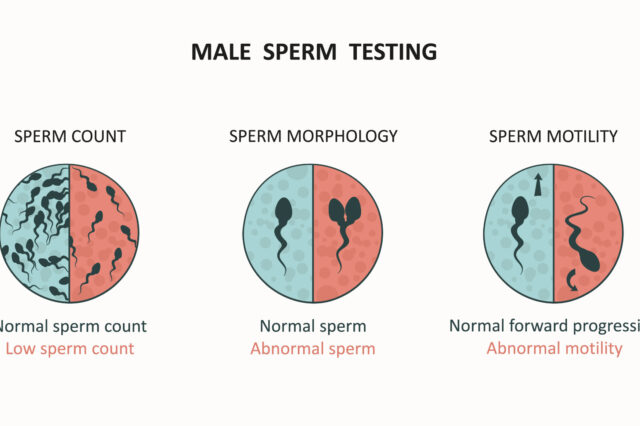From Infertility Struggles to Finding a Family at UF Health
A few years ago, Nicholas and his wife moved back to Nicholas home state of Florida to complete his training at UF Health. Their plan was that as soon as their…

Update your location to show providers, locations, and services closest to you.


UF Health Shands Hospital is rated High Performing for urologic care by U.S. News & World Report.
The UF Health Cancer Center received designation from the NCI because of the exceptional, multidisciplinary care the Cancer Center delivers to patients and the leading-edge clinical research conducted by its faculty. Our providers across the spectrum of cancer care work together to provide personalized care to our urologic cancer patients. Cases are presented at weekly tumor boards which are attended by physicians across multiple departments, so they can work together to develop the best treatment plan possible.
Testicular cancer is the most common malignancy in men between the ages of 15 and 35 years. Fortunately, it is one of the most curable cancers, due to early diagnosis, new treatments such as cisplatin chemotherapy and a greater understanding of the nature of the disease.
Testicular Cancer; Cancer - testes; Germ cell tumor; Seminoma testicular cancer; Nonseminoma testicular cancer; Testicular neoplasm
There are approximately 8,000 newly diagnosed cases of testicular cancer each year in the United States. The probability that an American white male will develop testicular cancer in his lifetime is approximately 0.2%. Most tumors occur in late adolescence or early adulthood. However, occasionally tumors are seen in infancy and in patients over the age of 60 years. The incidence of testicular tumors in African-Americans is dramatically less than that in American whites.
The probability that an American white male will develop testicular cancer in his lifetime is approximately 0.2%. Most tumors occur in late adolescence or early adulthood. However, occasionally tumors are seen in infancy and in patients over the age of 60 years. The incidence of testicular tumors in African Americans is dramatically less than that in American whites.
Types of testes cancer include:
The cancer type determines its biological behavior, thus, distinguishing the type (seminoma vs. non-seminoma) is important in making treatment recommendations. It is not unusual to have multiple cell types in a given testicular cancer (i.e., embryonal carcinoma and teratoma together).
Some testicular tumors produce proteins that can be detected in the blood and can be used as tumor markers to detect and survey disease. The most common tumor markers produced by testicular cancer are alpha fetoprotein, or AFP, human chorionic gonadotropin, or hCG, and lactate dehydrogenase, or LDH. Levels of these tumor markers should normalize after successful treatment; persistently elevated markers usually indicate presence of active disease. Most testis cancers (70%) are diagnosed at an early stage, while still confined to the testicle. However, nearly 20% of cases present with regional lymph node (retroperitoneal) involvement and approximately 10% present with distant metastasis. In general, survival rates are excellent following treatment; five-year survival for local, regional and distant disease is 99%, 96% and 71%, respectively.
Most patients notice a mass, pain or swelling in one testicle, and about 10% of patients will notice an acute pain.
In a very small percentage of patients, the first symptoms are from metastases, including neck mass, problems with breathing (cough or shortness of breath), difficulty eating, abdominal pain, back pain or pain in the bones.
Typically the patient or a physician feels a mass within the testicle. It is not unusual to have small lumps in the epididymis; however, any unusual mass should be evaluated by a physician. Other diseases that can cause swelling or tenderness in the testicles include infection, fluid around testicles, hernia or testicular torsion. An ultrasound examination of the scrotum and testicle is the most reliable technique to evaluate the presence of a testicular tumor.
Early detection is important, so monthly self-examination is recommended. This is best performed in a warm shower. Any suspicious areas should be examined by a physician. If an intratesticular mass is present, a radical orchiectomy — removal of the affected testicle and spermatocord — should be performed.
Testicular tumors are staged using the TNM system. Tumors are staged based on the findings at the surgery to remove the testicle including; the microscopic examination, serum tumor markers, chest X-ray, CAT scan and other studies as indicated. Staging helps in assessing risk and in making treatment recommendations.
T0 - No evidence of primary testicular tumors T1 - Tumor confined to the testicle without lymphovascular invasion T2 - Tumor invading outside the capsule of the testicle or with lymphovascular invasion T3 - Tumor invading the spermatic cord T4 - Tumor invading the scrotum
Nx - Regional lymph nodes cannot be assessed N0 - No regional lymph node metastases N1 - Lymph node metastases 2 cm or less in greatest dimension, less than 5 positive nodes N2 - Lymph node metastases more than 2 cm but not more than 5 cm in greatest dimension, or greater than 5 positive lymph nodes N3 - Lymph node metastases greater than 5 cm in greatest dimension
Mx - Distant metastasis cannot be assessed M0 - No distant metastasis M1 - Distant metastasis M1a - Nonregional nodal or pulmonary metastasis M1b - Distant metastasis other than to nonregional lymph node and lungs
Sx - Marker studies not available S0 - Markers within normal limits S1 - LDH < 1.5 x Normal AND hCG < 5,000 mIu/mL AND AFP < 1,000 ng/mL S2 - LDH 1.5-10 x N OR hCG 5,000 to 50,000 mIu/mL OR AFP 1,000-10,000 ng/mL S3 - LDH > 10 x N OR hCG > 50,000 mIu/mL OR AFP > 10,000 ng/mL
Testis tumors can spread by one of three routes. First and most commonly, they may spread through the lymph nodes in the back and abdomen. Right-sided tumors tend to spread to the right side of the lymph nodes and left-sided lymph nodes in the back. Second, they may spread to adjacent tissue through the wall of the testicle into the blood supply or tubes that transport sperm. Lastly, testicular tumors can initially spread by the bloodstream to distant organs such as the lung, bone or brain.
Where testicular cancer is probable, is best to treat it initially by removing the testicle through an incision in the groin. Once the tumor is removed, any elevated tumor markers should return to the normal range. If they do not normalize, one should suspect that cancer is still present. Depending upon the examination, tumor markers, results of X-rays and type of tumor present on microscopic evaluation, a variety of different treatment options may be recommended.
In patients with early-stage seminoma, removing the testicle and radiation to the back may be appropriate. With other types of tumors, initial chemotherapy or surgery to remove the lymph nodes in the back may be necessary.
Traditional surgery removes the retroperitoneal lymph nodes located in back of the abdomen. For early-stage disease, the lymph nodes can be observed, treated with a short course of chemotherapy or treated with a lymph node dissection. Most often, surgery is performed through an open incision to allow complete removal of all potentially involved lymph node tissue. In some cases, laparoscopic surgery may be used to remove the lymph nodes.
Testicular cancer is one of the most treatable and curable cancers. The survival rate for men with early-stage seminoma (the least aggressive type of testicular cancer) is greater than 95%. The disease-free survival rate for Stage II and III cancers is slightly lower, depending on the size of the tumor and when treatment is begun.
Performing a testicular self-examination (TSE) each month may help detect testicular cancer at an early stage, before it spreads. Finding testicular cancer early is important for successful treatment and survival.
The UF Health Cancer Center received designation from the NCI because of the exceptional, multidisciplinary care the Cancer Center delivers to patients and the leading-edge clinical research conducted by its faculty. Our providers across the spectrum of cancer care work together to provide personalized care to our urologic cancer patients. Cases are presented at weekly tumor boards which are attended by physicians across multiple departments, so they can work together to develop the best treatment plan possible.
Welcome to Gainesville! UF Health Shands Hospital, an academic medical center affiliated with the University of Florida College of Medicine, cares for patients from around the world. Physicians practicing at UF Health Shands Hospital are UF College of Medicine faculty. Learn more about Gainesville.
Initial consultations with the UF Health Urologic Cancer Center are held at the UF Health Urology practice, located on the third floor of UF Health Medical Plaza.






Our community and patient programs provide great value to patients, families and loved ones. People can find support, educational materials, expert consultants and more. In most instances, these programs are offered free of charge.
Addresses the compelling and unique medical and psychosocial needs of our adolescent and young adult patients — from diagnosis to survivorship.
Improves health and quality of life for long-term cancer survivors.
An educational and networking event that brings together cancer patients, survivors, caregivers and health care professionals.
Interdisciplinary facility that helps support the diverse needs of individuals and families.
Pain management treatment plans for cancer patients.
Helps individuals access high-quality cancer screening, prevention and treatment services.
Can assist you through the treatment process in a number of practical and supportive ways.
A few years ago, Nicholas and his wife moved back to Nicholas home state of Florida to complete his training at UF Health. Their plan was that as soon as their…

This April, UF Health celebrates Testicular Cancer Awareness Month to inform and spread awareness about the importance of understanding this disease.…

Long-term marijuana users take note… that smoke isn’t...